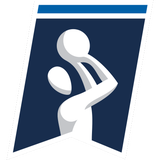
Bob Knight's moves with 1984 US Olympic team showed his scouting skills matched his tactical skills
Bob Knight built his best teams with a blend of talent and fit. It was never more evident than on the 12-man roster he selected for the 1984 U.S. Olympic team.
Sure, the General cut future Hall of Famers Charles Barkley and John Stockton. But he kept three others, each of whom later made the 1992 Olympic "Dream Team" — Patrick Ewing, Michael Jordan and Chris Mullin.
And for a coach who seemingly won everything — 902 games, three national championships, 11 Big Ten titles, Olympic gold and multiple coach of the year awards — it was his early scouting report on Jordan that might go down as his crowning achievement.
"If we're going to pick the three or four best athletes I've ever seen play basketball, he (Jordan) would be one of them. I think he's the best athlete I've ever seen play basketball, bar none," Knight said back then. "In the categories of competitiveness, ability, skill and then athletic ability, he's the best athlete, he's one of the best competitors, he's one of the most skilled players. That to me makes him the best basketball player that I've ever seen play."
It was quite a compliment from Knight, who often raved about the greatness of his Ohio State teammates Jerry Lucas and John Havlicek or his litany of Indiana pupils such as Quinn Buckner, Steve Downing or Scott May.
Knight even encouraged Portland Trail Blazers general manager Stu Inman to take Jordan with the No. 2 overall draft pick. Inman chose the oft-injured Sam Bowie who had skipped the Olympic Trials, allowing Jordan to slide to the Chicago Bulls at No. 3.
For Knight — who died Wednesday at the age of 83 — it was never about celebrity.
When he constructed the last American amateur Olympic team to win gold, he relied on the same philosophy that led the Hoosiers to his first two national championships— defense, cutting, movement and unselfishness. Nobody understood the concept better than 19-year-old guard Steve Alford, the son of a prominent Indiana high school coach who had known Knight since third grade.
Alford was the only player on that 1984 roster who wasn't a first-round draft pick.
Barkley, on the other hand, was an offensive star at Auburn who measured in at 284 pounds. Knight initially asked the 6-foot-6 forward to slim down to 215 and wasn't impressed with Barkley's defense.
"The word `interesting' is a good word to apply to Barkley," Knight said during the selection process. "He's an extremely talented player. He's got to become a much better defensive player. He has to work at sharpening what he does. If he can, he has an excellent chance [to make the team]. If he can't, he's not going to make the team."
He didn't.
Instead, Knight went with an eclectic mix of guys with all-conference and All-American credentials including Jordan's teammate at North Carolina, Sam Perkins. 11 of the 12 players on the team went in the first round of the 1984 or 1985 NBA drafts; nine were top-10 picks.
The names ranged from household, such as Ewing or Jordan, to college stars such as Joe Kleine and Jon Koncak to forgotten ones such as Vern Fleming, Jeff Turner or Leon Wood.
But each possessed some skill Knight appreciated, and the result was one of the most dominating Olympic performances in modern Olympic history albeit during the Soviet Union's boycott of the Los Angeles Games.
The U.S. team outscored opponents 95.4 to 63.3 on average. Each of the eight wins came by double-digit margins including a 96-65 victory over Spain in the final game and four players — Jordan (17.1), Mullin (11.6), Ewing (11.0) and Alford (10.3) — scored in double figures. Wayman Tisdale led the team with 5.9 rebounds and Wood was the leader in assists (7.9).
Jordan later said he might not have played on Knight's team if he knew what it would be like. But in a coming-out party that set up Jordan for a monumental NBA career, he won Knight over with an unsigned note, written on a yellow sheet of paper and left in the locker room before Knight could give his pregame speech.
"The note read ‘Coach: Don't worry. We've put up with too much s—- to lose now,'" Knight recounted in his autobiography "Knight: My Story." "I still have the paper, and I don't have any doubt about its author. By then, I knew what Michael Jordan's handwriting looked like. I looked at that note, and everybody was watching. Michael had his head down, but he couldn't resist looking to see what I was going to do. All I said was, ‘Okay, let's go play.'"
Indiana planned to honor Knight with moments of silence before Friday's men's exhibition game and Saturday's football game against Wisconsin. The football, men's and women's basketball teams also will wear patches reading "RMK" for Robert Montgomery Knight.
Reporting by The Associated Press.
[Want great stories delivered right to your inbox? Create or log in to your FOX Sports account, follow leagues, teams and players to receive a personalized newsletter daily.]


